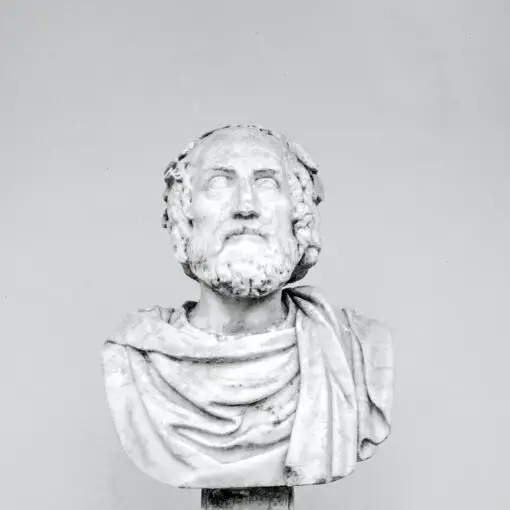Stoicism, an ancient Greek philosophy, has persisted through the ages, offering a framework for living a meaningful and resilient life.
Developed by thinkers like Zeno of Citium, it later flourished under the guidance of philosophers such as Seneca, Epictetus, and Marcus Aurelius.
The essence of Stoicism lies in the pursuit of virtue and the practice of self-control, aiming to align one’s life with reason and nature. This philosophy guides individuals on how to react to emotions and external events, emphasizing the importance of an internal locus of control.

Incorporating Stoicism into one’s daily life involves understanding and applying its core principles, such as the Four Cardinal Virtues—wisdom, courage, justice, and temperance.
By adopting a Stoic mindset, one learns to differentiate between what is within their control and what is not, thus focusing their efforts on their own actions and attitudes.
Stoic practices and exercises aim to cultivate a resilient character, enabling one to deal with life’s challenges and maintain harmony in relationships.
Furthermore, contemplating mortality is a Stoic exercise that fosters appreciation for the present and a sense of urgency in living a virtuous life.
Key Takeaways
- Stoicism offers guidance for mastering emotions and practicing virtue.
- The Four Cardinal Virtues are central to Stoic philosophy.
- Stoic practices enhance resilience and personal growth.
Understanding Stoicism

Stoicism is an ancient philosophy that teaches the development of self-control and fortitude as a means to overcome destructive emotions. It is still relevant today, providing a framework for personal growth and resilience.
Historical Roots
Stoicism originated in Athens, Greece, around the early 3rd century BC.
Zeno of Citium is credited as its founder but it was later developed further by philosophers such as Seneca, Epictetus, and Marcus Aurelius.
Stoicism quickly became influential in Rome and has continued to impact thinkers throughout history to the present day. The philosophy gained prominence for teaching that rationality can lead to a virtuous life in harmony with nature.
Core Concepts
Virtue is the cornerstone of Stoicism, often expressed as living in accordance with nature and reason.
The Stoics identified four cardinal virtues: wisdom, courage, justice, and temperance. These interrelated virtues form the basis of Stoic ethics and offer a path to serenity and contentment through the rational management of one’s emotions.
- Wisdom: Knowledge of what is good, bad, and indifferent.
- Courage: Not just in facing danger, but also as the ability to face moral challenges and adversity.
- Justice: Treating others fairly and acting as a member of a larger community.
- Temperance: Self-restraint and moderation in all things.
The principles of Stoicism extend beyond the individual virtues, advocating for the importance of reason as a method for discerning the correct action in any given situation. Stoicism also teaches the impermanence of external events, encouraging individuals to focus on their own actions and responses, which are within their control.
The Four Cardinal Virtues

The bedrock of Stoic philosophy rests on four cardinal virtues that are to be cultivated for a life of virtue and equanimity. They serve as actionable guides for daily living, steering individuals toward ethical decisions and personal growth.
Practical Wisdom
Practical wisdom is the ability to navigate complex situations with clarity and make decisions that reflect one’s true values.
It involves the judicious application of knowledge to determine the most appropriate action at any given moment.
Practitioners focus on the aspects of life within their control and act with foresight and understanding of consequences.
Courage and Resilience
Courage and resilience pertain not only to physical bravery but also to the strength of character.
Stoicism teaches that one should confront hardships with fortitude, accepting challenges without fear.
It’s about the inner strength to uphold one’s beliefs despite external pressures and the resilience to endure life’s adversities with grace.
Justice and Fairness
Justice and fairness are central to Stoic ethics, emphasizing the importance of treating others with equity and compassion.
It tells they should act with integrity, honoring societal and interpersonal responsibilities.
Justice in Stoicism is about contributing to the common welfare, recognizing that one’s actions have broader implications.
Moderation and Self-Control
Moderation and self-control are vital for maintaining balance in one’s life.
Stoics value discipline and the moderation of desires and emotions to achieve a harmonious existence.
Self-control is exercised to direct energy toward meaningful pursuits and resist the pull of excess and temptation.
Applying Stoicism to Daily Life
Incorporating Stoicism into one’s daily routine involves embracing its principles fully, from acceptance to self-reflection, each playing a crucial role in cultivating a life of balance and wisdom.
Acceptance of Events
One’s initial response to any situation should be rooted in acceptance; this is the Stoic’s approach to events outside of personal control.
They understand that distress often comes from resisting reality rather than the events themselves.
Daily life is rife with unexpected change. Thus, applying Stoicism means one views emotions as feedback, not directives.
Acceptance does not mean passivity; rather, it involves recognizing the difference between what one can change and what one cannot, and focusing energy accordingly.
Cultivating a Stoic Mindset
A Stoic mindset is shaped by the deliberate practice of virtues such as wisdom, courage, justice, and moderation in every action.
It requires constant self-examination and aligning one’s thoughts and actions with one’s purpose.
This practice manifests in daily life as one approaches tasks, interpersonal interactions, and personal goals with intention and discipline.
By acknowledging that only their attitude and actions are truly within their control, individuals can cultivate a sense of inner calm and clarity amidst life’s challenges.
The Role of Reflection
Reflection is a pivotal Stoic exercise that enables self-awareness and mindfulness.
By reviewing their day, Stoics gain insight into their behaviors and decisions.
It’s a practice of asking oneself probing questions like, “How did I respond to today’s events?” and “What could I have done better?”
They use reflection not as a tool for self-criticism but as a means to grow and improve, reaffirming their commitment to Stoic principles and ensuring that they live with meaning and intention each day.
Regular reflection nurtures a relationship with the self that is open and honest, creating a foundation for thoughtful change and personal development.
Stoic Practices and Exercises
Practicing Stoicism involves a range of techniques designed to foster resilience, control over one’s reactions, and a profound sense of contentment. These exercises are aimed at encouraging reflection, building mental fortitude, and aligning one’s values with their actions.
Journaling and Self-Reflection
Journaling is a quintessential Stoic practice that aids in self-reflection.
Practitioners write daily entries assessing their actions, emotions, and thoughts.
The purpose is to identify areas for improvement and reinforce values.
A common exercise involves recording what one is grateful for, which can enhance joy and appreciation for the present moment.
Meditation and Mindfulness
Stoicism dovetails with meditation and mindfulness.
These practices involve focusing on the present, thereby reducing anxiety and promoting clear thought.
Stoic meditations can include contemplating stoic quotes or considering one’s role in the larger tapestry of life to maintain perspective on personal problems.
Premeditatio Malorum
The exercise of premeditatio malorum—the premeditation of evils—is a preparatory technique where one anticipates potential challenges or misfortunes.
This mental rehearsal reduces the impact of adverse events by forearming the individual with the resilience to face them.
Negative Visualization
Negative visualization involves imagining the loss of things one values to foster appreciation and simplicity in life.
By contemplating the impermanence of life’s blessings, Stoics strengthen their ability to embrace amor fati, the love of one’s fate.
This practice aids in mitigating distress over loss or change.
Dealing with Challenges
Stoicism teaches that encountering challenges is an opportunity for personal growth and gaining strength. By shifting one’s perception and focusing energy on controllable aspects, individuals can foster resilience and face obstacles without fear.
Perception of Obstacles
Stoics view obstacles not as impediments, but as chances to practice virtues and improve their character.
An obstacle is perceived as a teacher that prompts them to adapt and evolve.
They adopt a mindset akin to what some may call ‘zen’, wherein a calm and composed approach turns barriers into stepping stones for growth.
Focusing on What You Can Control
They concentrate their efforts on what lies within their realm of control.
This includes their thoughts, emotions, and reactions.
Stoics use discernment to separate concerns, investing their energy wisely.
By attending to their circle of influence, they maintain serenity in the midst of life’s storms, demonstrating a composed and confident mastery over their internal state.
Stoicism and Relationships
Stoicism, a philosophy renowned for teaching self-control and resilience, offers valuable insights into fostering healthier and more fulfilling relationships.
It emphasizes the importance of emotional intelligence, such as empathy and the need for inner peace, achieving a balance between personal detachment and deep understanding within interpersonal connections.
Empathy and Understanding
A Stoic’s approach to relationships heavily revolves around empathy.
They advocate for a profound understanding of one’s partner, which involves actively listening and being emotionally present.
For instance, the essence of Stoicism in relationships can empower individuals to offer support without imposing their own judgments or expectations, thereby nurturing the bond with empathy and respect.
Detachment and Inner Peace
Furthermore, cultivating a sense of detachment is central to Stoicism, as it can lead one to inner peace even in the midst of relationship turbulence.
This does not imply indifference but rather an acceptance of events beyond one’s control — embracing the love of fate.
Balance is intrinsic to this concept; as one learns to care deeply while maintaining a level of detachment, they achieve a state of tranquility and preparedness for life’s inherent unpredictability.
This Stoic practice facilitates not only personal growth but also the development of stronger, more resilient bonds with others.
Contemplating Mortality
In the stoic practice, contemplating mortality is a tool to foster appreciation for life and cultivate resilience.
It involves the recognition of death’s inevitability and the acceptance of one’s mortality.
Memento Mori
Memento mori is a Latin phrase that translates to “remember you must die.”
This Stoic concept serves as a reminder of the transient nature of life, encouraging individuals to value each moment and live virtuously.
To practice memento mori, one can:
- Reflect daily on the inevitability of death.
- Use this awareness to prioritize actions and choices that align with personal values and virtues.
The Stoic view of death is not to invoke dread but to utilize the recognition of mortality to enhance life’s value and meaning.
Amor Fati
Amor fati, meaning “love of fate,” is the embracement of all that life entails, including suffering and loss.
It is not merely about acceptance but about finding the good in every situation.
Practicing amor fati involves:
- Celebrating life as it unfolds, even in its most challenging moments.
- Transforming obstacles into opportunities for personal growth.
By embracing amor fati, individuals can view life as a canvas of experiences that shape and refine their character, turning the contemplation of mortality into a source of strength.
Stoic Wisdom in Leadership
Stoic philosophy prizes principles that enhance leadership qualities such as fortitude, justice, and responsibility.
A leader guided by Stoicism exercises emotional resilience, remaining composed and steadfast in the face of challenges.
Such leaders display fortitude, not by being unfeeling, but by managing their reactions constructively.
Leaders who practice Stoic wisdom often stress justice in their decision-making.
They strive to treat others fairly and make decisions that serve the greater good.
Their sense of responsibility is keen; Stoicism teaches that one’s choices should reflect a commitment to ethical conduct and the welfare of others.
In the realm of freedom, Stoicism posits that true liberty comes from within—it’s the freedom to control one’s own perceptions and actions.
A stoic leader thus focuses on what they can control, letting go of external factors beyond their influence.
This internal locus of control can empower teams, bolstering their resilience and autonomy.
Here is a brief summary of key Stoic attributes for leadership:
- Fortitude: Embracing challenges with calmness and resilience.
- Justice: Ensuring fairness and ethical consideration in all actions.
- Responsibility: Prioritizing the team’s wellbeing and ethical outcomes.
- Freedom: Recognizing the power of internal control and encouraging it in others.
Resources for Further Learning
To truly immerse oneself in the practice of Stoicism, it is beneficial to explore the rich array of resources available.
From the wisdom of ancient philosophers to the insights of modern practitioners, there are various avenues for deepening one’s understanding and application of Stoic principles.
Key Stoic Philosophers
Seneca, Epictetus, and Marcus Aurelius are central figures in Stoic philosophy.
Their works provide foundational knowledge and guidance for practicing Stoicism.
Exploring Seneca’s letters, Epictetus’s teachings, and Marcus Aurelius’s Meditations allows readers to connect directly with Stoic thought.
- Seneca: Letters from a Stoic
- Epictetus: The Enchiridion
- Marcus Aurelius: Meditations
Influential Stoic Texts
Stoic philosophy is built upon pivotal texts that continue to influence readers today.
Two particularly prominent works include The Daily Stoic by Ryan Holiday and Stephen Hanselman, which offers daily meditations on wisdom, perseverance, and the art of living, and Holiday’s The Obstacle Is the Way, which elucidates how to turn trials into triumphs.
- The Daily Stoic: 366 Meditations on Wisdom, Perseverance, and the Art of Living
- The Obstacle Is the Way: The Timeless Art of Turning Trials into Triumph
Modern Stoic Communities
The resurgence of Stoicism in modern times has led to the formation of various communities where individuals can learn and discuss Stoic practices.
The Stoic Fellowship is a global network that connects people interested in Stoicism.
Online forums, such as the subreddit r/Stoicism, offer a platform for discourse and advice sharing.
These resources serve as a robust foundation for anyone looking to integrate Stoic philosophy into their daily lives, whether drawing inspiration from the Stoic view of the ideal person or the technique of “view from above” for gaining perspective.
Frequently Asked Questions
Stoicism, a philosophy for personal ethics and growth, can be practiced through daily exercises focusing on self-discipline, resilience, and reflective meditations. Here are some common questions to understand the basics of Stoicism, its principles, and its application in daily life.
What are the initial steps to begin practicing Stoicism?
One starts Stoicism by learning to differentiate between what is in their control and what is not.
They begin by focusing on their own actions, responses, and judgments while accepting external events as they occur.
What are the main principles of Stoicism?
The core principles of Stoicism include understanding the natural order of things, practicing self-control, acknowledging the temporary nature of life, and striving for inner peace despite external chaos.
How can one develop a stoic mindset in everyday situations?
Developing a stoic mindset involves embracing challenges as opportunities for growth.
It requires one to remain calm in adversity, reflect on daily experiences, and react rationally rather than emotionally.
In what ways can Stoicism be applied to modern life?
Stoicism can be applied to modern life by practicing mindfulness, focusing on personal virtue, and exercising self-discipline in the face of modern distractions and stressors.
What practices can help maintain stoic principles?
Maintaining stoic principles can be supported by daily reflections, journaling, setting intentional routines, and engaging in philosophical readings and discussions.
How does one cultivate resilience through Stoicism?
One cultivates resilience in Stoicism by preparing for life’s inevitable hardships and adopting a mindset that views obstacles as a natural part of human existence.
Resilience is bolstered by persistent practice of stoic teachings and understanding the value of enduring difficulties.





